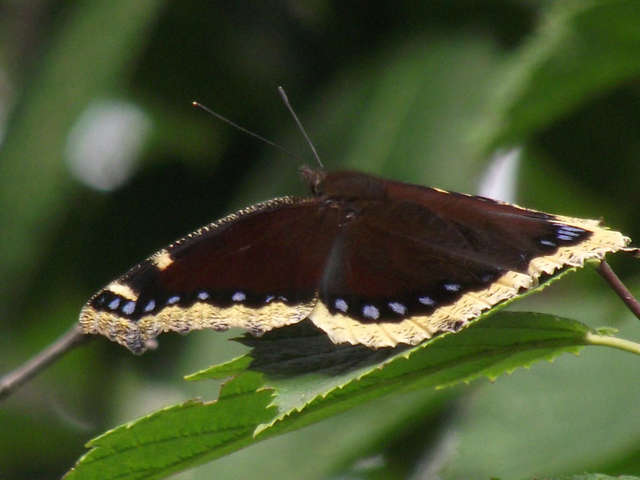My mourning cloak
A true sign that spring is on the way or has actually arrived is the appearance of the Mourning Cloak butterfly (Nymphalis antiopa). Not much imagination is needed to determine how it was given this name. Supposedly, it reminds one of a cloak that mourners used to wear in days of yore (with all due respect to those who may still follow this practice).
Unlike most lepidopterans, the mourning cloak overwinters as an adult and emerges on warm, sunny, late winter days or early springs days. They can often be spotted sitting on the trunk of a tree basking in the sun. After mating in the spring, the female lays eggs in groups around the twigs of host plants (willow, elm, cottonwood, aspen, and paper birch). The larvae live in a communal web and feed together. After feeding for a while, they pupate and the adults emerge in June/July. The adults feed for a brief time, preferring tree sap, and then spend the bulk of the rest of the summer in torpor (estivate). They emerge again in the fall and feed to store energy to hibernate. Some of the northern populations will migrate south.
More on the Mourning Cloak:
